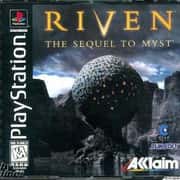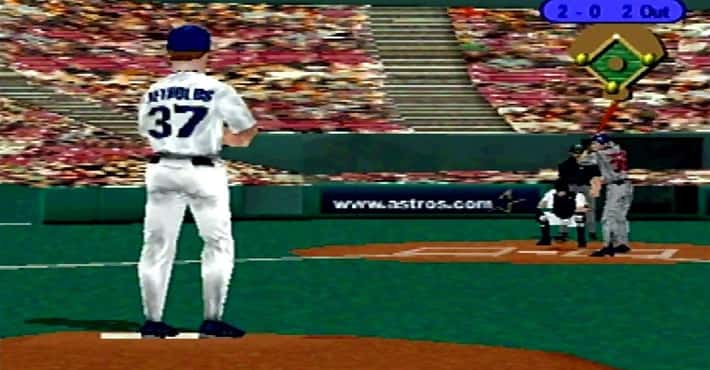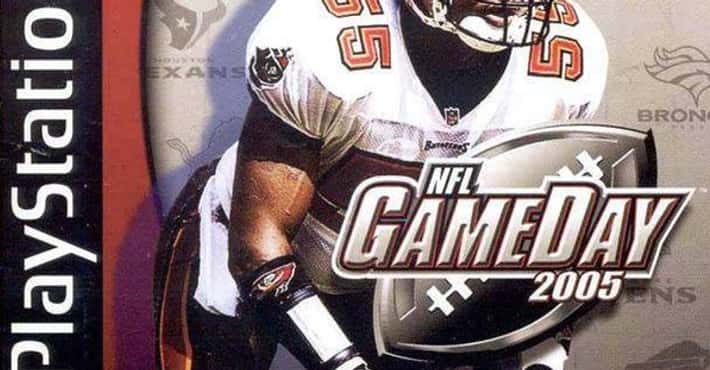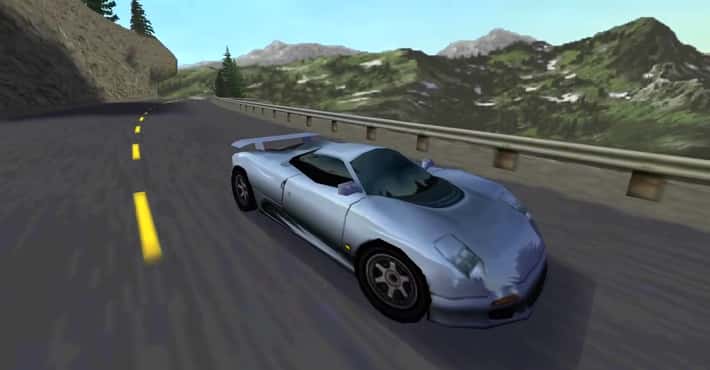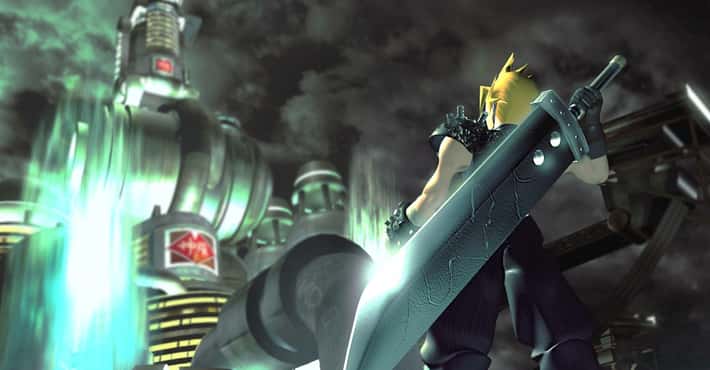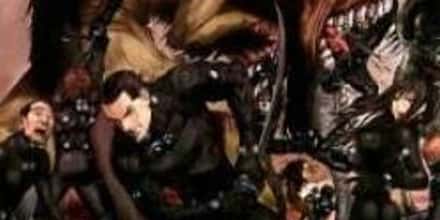Here is a detailed list of every PlayStation game ever produced for the Sony PlayStation One system. The PSOne console was one of the most popular game systems of all time. PlayStation 1 games were produced by hundreds of Sony PlayStation game developers. The PlayStation One games featured state-of-the-art graphics. The PlayStation 1 now has a cult following amongst classic game collectors, with a library of both large titles and little-known classics. Feel free to use these list items to start a list of your favorite PlayStation 1 games.
While PS1 may be a relic of gaming systems past, some of these games have lived on greater versions on newer versions of PlayStations. What are Playstation 1 games? Take a look here and see all the great PS1 games.
- Rescue Shot, known as Rescue Shot Bubibo in Japan, is a 3D light gun video game for the PlayStation console which was released in Japan and Europe in 2000. The game is non-violent and aimed at younger players, the game is more forgiving of poor accuracy than others in the genre. Players watch over the game's hero, Bo, as he absentmindedly makes his way through each location, dealing with enemies and manoeuvering him past dangers.
- Sep 01 1997An updated version, Resident Evil: Director's Cut, was released for PlayStation in September 1997, a year and a half after the original game. Director's Cut was produced to compensate for the highly publicized delay of the sequel, Resident Evil 2, and was originally bundled with a playable pre-release demo of that game. The Japanese version of the demo disc also included a pre-release demo of Rockman Neo, later retitled Rockman DASH (Mega Man Legends outside Japan), and a trailer for the newly released Breath of Fire III.
- Jan 27 2000Resident Evil Survivor, known in Japan as Biohazard Gun Survivor, is a first person shooter video game developed by TOSE and published by Capcom. It was released on the PlayStation in Japan on January 27, 2000, in Europe on March 31, 2000 and in North America on August 30, 2000. It is a spin-off to the Resident Evil video game series. As the first release of the Gun Survivor series, this game was a major difference from the main Resident Evil series, substituting the third-person perspective of the previous games to the first-person view. The Japanese and European versions of the game were compatible with Namco's GunCon/G-Con 45 light gun, making it one of the first off-rail light gun games, whereas light-gun compatibility was removed from the North American release due to shooting games being partly blamed for the motivation of the then-recent Columbine High School massacre.
- Jan 01 1995Return Fire is a 1995 video game developed by Silent Software, Inc. for the 3DO Interactive Multiplayer and later ported to the PC and PlayStation in 1996. It was preceded by Fire Power and followed by Return Fire 2. Return Fire is a vehicular shooter from a 3D bird's eye view, in which the player's goal is to capture the enemy flag and return with it to their base. It is remembered as one of the 3DO's "best games" in its Home of the Underdogs entry.
- Jan 01 1994Revolution X is an arcade rail shooter game and the spiritual sequel to T2: The Arcade Game developed and published by Midway in 1994, featuring the rock band Aerosmith. It features gameplay similar to Midway's earlier Terminator 2: Judgment Day. In the game, players battle the oppressive New Order Nation regime and their leader Helga, who have abducted Aerosmith. Players use a mounted gun to control onscreen crosshairs and shoot enemies using compact discs. The members of Aerosmith are hidden throughout the game's international locales and must be found in order to receive the game's true ending. The game was ported to various consoles as well as DOS computers. These ports were negatively received and reportedly dissuaded Midway from making a sequel.
- Rhapsody: A Musical Adventure, released in Japan as The Puppet Princess of Marl Kingdom is a tactical role-playing game for the PlayStation from Atlus USA and Nippon Ichi Software, the creators of Disgaea, and is part of the Marl Kingdom series. It was released four times in Japan — once in 1998, then again as The Adventure of Puppet Princess + 1 in 1999, and then again as The Adventure of Puppet Princess in 2001, and was released a fourth time for the Nintendo DS on June 6, 2008. The game was released in the United States, in 2000 and in 2008 and is the only game in the main series to be released outside Japan. A version of the game was also released on mobile phones. Rhapsody, along with its sequels, are considered musical RPGs, meaning in place of FMV cutscenes, there are musical numbers, complete with vocals. The game is also known for its "overwhelming cuteness" and low level of difficulty. Although this may make the game seem geared towards a younger audience, in Japan, the game and series in general has seen much success.
- Mar 22 2005Ridge Racer, released in Japan as Ridge Racers, is an arcade racing video game developed by Namco for the PSP. It is named after the eponymous Ridge Racer video game series to which it belongs. The game was released in Japan on December 12, 2004, in North America on March 22, 2005 and in Europe on September 1, 2005 as a lanuch title. A sequel titled Ridge Racer 2 has also been released for the PSP. Available in the game is a fully playable version of the Namco arcade game New Rally-X.
- Sep 30 1996Ridge Racer Revolution is a racing game developed by Namco for the PlayStation in 1995. It is the sequel of the inaugural game Ridge Racer. The game's covers between the Japanese version and the European & North America version are different in this game. The game's cover of the Japanese version features three regular racing cars. They are the car #3: F/A Racing, car #5: R.T. Blue Mappy and the car #18: R.T. Bosconian. However, the game's cover of the European & North America version features the debuting "White Angel" car. It is one of the three bosses which you have to unlock during this entire game.
- Jan 01 1996Rise 2: Resurrection is a computer game developed by Mirage Media and published by Acclaim Entertainment in 1996. The game is a sequel to Rise of the Robots, and improves on the first game's graphics, rendering and animation; hits now give off metal scraps and electrical arcs progressively run over the bodies of damaged robots. The in-game music features hard-rock themed music by Tom Grimshaw at Mirage, and a theme by Queen's guitarist Brian May entitled "Cyborg".
- Sep 30 1999Rising Zan: The Samurai Gunman is an action-adventure game developed by UEP Systems and published by Agetec for the PlayStation in 1999. The story is notable for its mix of both eastern and western idiosyncrasy, most notably in the protagonist Zan, who has traits of both a Japanese samurai and a Wild West gunslinger. The game was also unique in that it had its own opening theme song with complete, sung lyrics, lending the game the vibe of a Western TV show from the 50s and 60s. The coda of the song also played at the end of each level.
- Jan 01 1997Riven is a puzzle adventure game and the sequel to Myst. Developed by Cyan Worlds, it was initially published by Red Orb Entertainment, a division of Brøderbund. Riven was distributed on five compact discs and released on October 31, 1997, in North America; it was later released on a single DVD-ROM, with improved audio and a fourteen-minute "making-of" video. In addition to the PC versions, Riven has been ported to several other platforms, including the PlayStation, Sega Saturn, and most recently iOS-based devices. The story of Riven is set immediately after the events of Myst. Having been rescued from the efforts of his sons, the main non-player protagonist Atrus enlists the help of the player character to free his wife from his power-hungry father Gehn. Unlike Myst, which took place on several worlds known as Ages, linked together by special books, Riven takes place almost entirely on the Age of Riven, a world slowly falling apart due to Gehn's destructive rule. Development of Riven began soon after Myst became a success, and spanned more than three years.
- Jan 01 1991Road Rash is the name of a motorcycle-racing video game series by Electronic Arts in which the player participates in violent, illegal street races. The series started on the Mega Drive and made its way to various other systems over the years. The game's title is based on the slang term for the severe friction burns that can occur in a motorcycle fall where skin comes into contact with the ground at high speed. Six different games were released from 1991 to 1999, and an alternate version of one game was developed for the Game Boy Advance. The Mega Drive trilogy wound up in EA Replay.
- Road Rash: Jail Break is a racing video game developed by EA Redwood Shores and published by Electronic Arts for PlayStation in 2000 and for Game Boy Advance in 2003. It is the sixth and final game in the Road Rash series.
- Jan 01 1999Roadsters is a racing game released by Titus Software in 2000 for the Nintendo 64, PlayStation, Sega Dreamcast and Game Boy Color. It is a car racing game that features both licensed cars from manufacturers and unlicensed cars from imaginary manufacturers that are based and bare great resemblance to their equivalent, real car models. The game also includes a multi-player mode supports up to 2 human players that can compete in any of the available circuits with 4 more CPU controlled racers. This was the only game Titus published for the PlayStation. It has met with mixed to negative reviews from critics. Video game developer Player 1 was originally plan to release the game for the PlayStation 2, but it was canceled.
- Robbit Mon Dieu, sometimes referred to as Jumping Flash! 3, is a 3D platform game for the Sony PlayStation. It was developed by Sugar and Rockets and published by Sony Computer Entertainment and released exclusively in Japan in 1999. It is the third and final game in the Jumping Flash! series. The game was released on the Japanese PlayStation Network on July 26, 2007.
- Jan 01 1996Robo Pit is a robot fighting game released in 1996 for PlayStation and Sega Saturn. The game was developed by Altron and published by Kokopeli Digital Studios outside Japan. A sequel, Robo Pit 2, was released in Japan on PlayStation in 1997. It was also released in Europe and North America in 2003. The rules are, build a robot and then try to fight your way to the top in arenas that are square in shape. There are many different types of arenas and the time of day can vary. There are various types of weapons which include The Axe, Lips, Sword, Missile and Claws as well as many more. As you fight your way to the top there are bosses you will fight along the way.






















